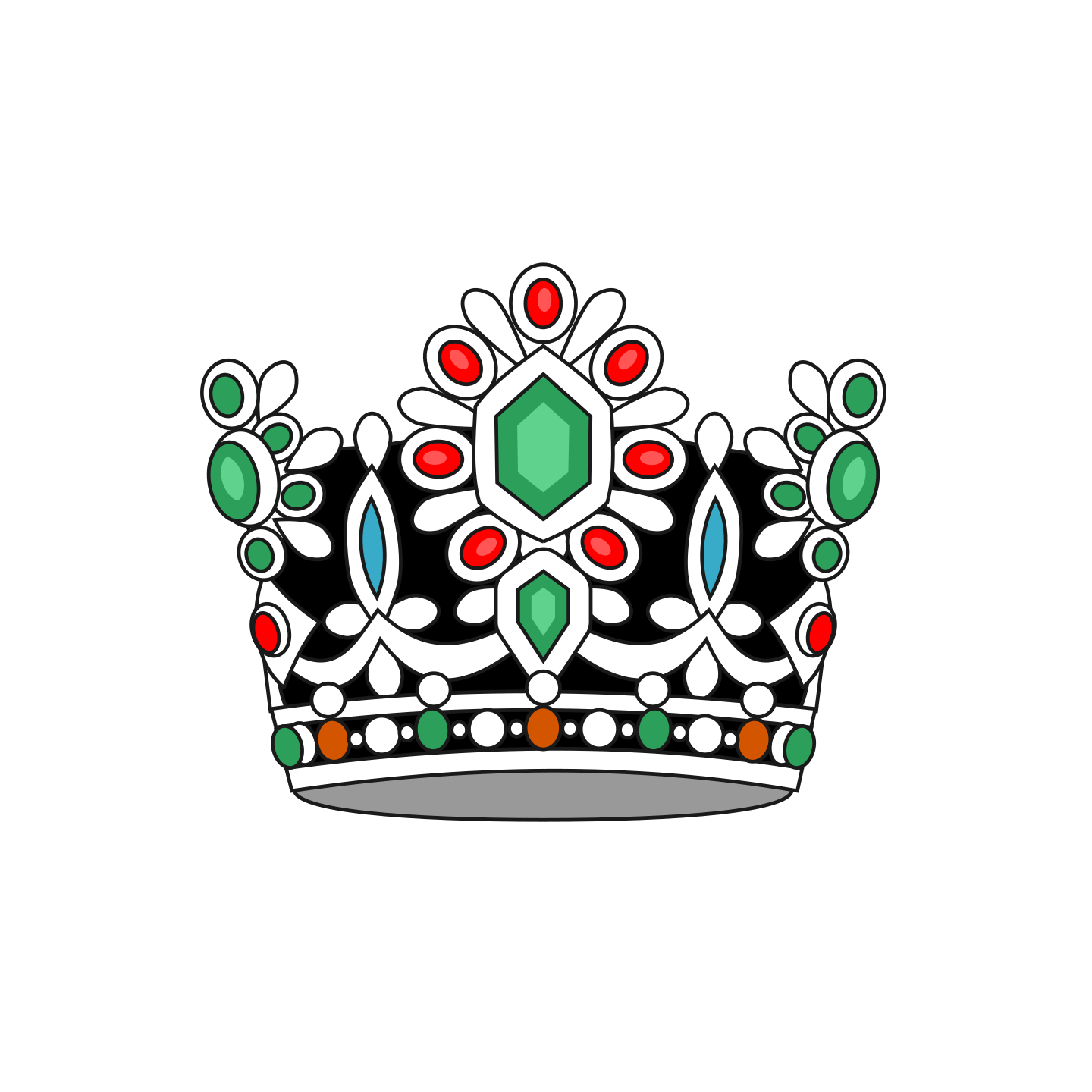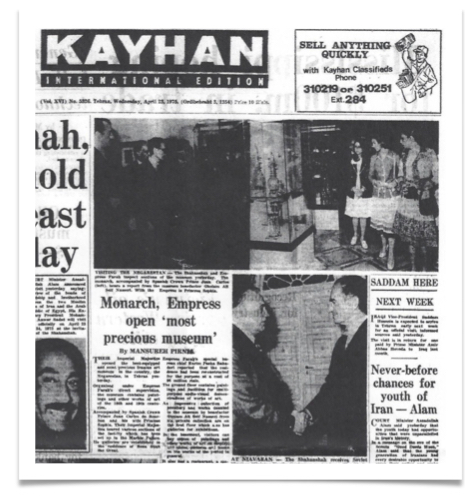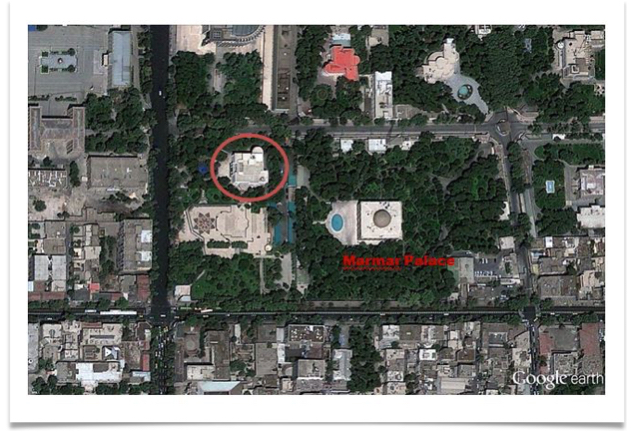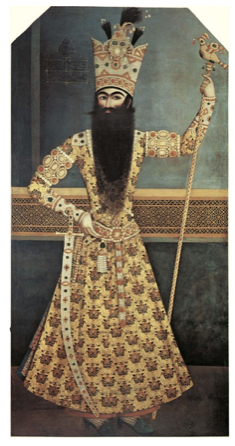M. Pirnia, “Monarch, Empress Open ‘Most Precious Museum’” from Kayhan International,
Tehran, April 23, 1975.
The Negārestān Museum was situated in downtown Tehran, in a park adjoining the Marble Palace (Kākh-e Marmar) on the corner of present-day South Felestīn Street and Emām Khomeini Street (then Kakh and Sepah streets). The building itself was constructed at the time of Reza Shah Pahlavi (1925-41).
The selection of paintings covered a wide range. The majority of the collection belonged to the finest and most clearly defined period of the nineteenth century, that is, the reign of Fatḥ-ʿAlī Shah. Also on permanent exhibit were examples of the arts of the book, lacquer work, and decorative arts of the period. The collection was acquired in part through the Private Secretariat and its advisors, and in part through the generosity of private collectors. The collection grew from a few hundred works in 1975 to approximately 3,000 works by 1978.
After its opening, the Negārestān became the permanent home of the largest and finest public collection of eighteenth and nineteenth-century Iranian paintings in the Western Hemisphere. Sixty-three Qajar paintings, formerly in the collection of the Rt. Hon Julian Amery was acquired by Empress Farah in 1969. By this historic and unprecedented act, the works were returned to their country of origin from England.
Qajar paintings: Persian oil paintings of the 18th & 19th centuries. Faber & Faber, 1972.
Among its activities were art education and temporary exhibition programs. In keeping with the aims of the Negārestān, these exhibitions covered a wide range of themes and materials, culled from private and public collections. The exhibitions were documented by bilingual catalogs (in Persian and English) and printed posters. In all, seven exhibitions were presented from 1975-78. The Revolutionary Guards occupied the building in 1979 and
the Museum became an official government building. The collection, which had been cataloged, sealed, and locked up, was handed over to officials at that time. As far as is known, the collection was transferred elsewhere but has not been sold.
M. Pirnia, “Monarch, Empress Open ‘Most Precious Museum’” from Kayhan International, Tehran, April 23, 1975.
©Layla S. Diba, PhD.





